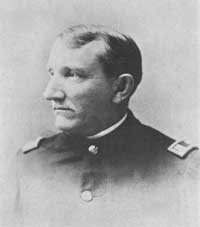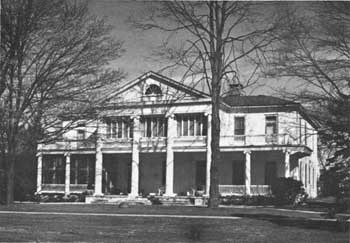





Survey of Historic Sites and Buildings
 |
CARLISLE INDIAN SCHOOL Pennsylvania |
 |
| ||
As the first of the off-reservation boarding schools and the model for scores of others, the Carlisle Indian School commemorates the efforts of the 19th-century reformers who attempted to improve conditions among the Indians. In its almost four decades of existence, from 1879 until 1918, the Government-operated institution provided thousands of students with an elementary and practical education.
 |
| Group of Sioux on arrival at Carlisle Indian School. (Library of Congress) |
 |
| Richard H. Pratt, founder of Carlisle Indian School. (Yale University Library) |
Richard H. Pratt, Civil War officer and later cavalry officer in Indian Territory (Oklahoma) and Texas, conceived the idea of the school. Between 1875 and 1878 he had been in charge of a group of Indian prisoners at Fort Marion, Fla., and had evolved an educational program for the younger ones. In 1878, when the prisoners gained their freedom, Pratt arranged for some of the young men and a group of western Indians to attend the black school at Hampton, Va. Stimulated by the success of that program, Pratt persuaded the Army to turn over the cavalry post at Carlisle Barracks, inactivated that same year, to the Indian Bureau for a school. The Army authorized Pratt to serve there. Beginning with 136 boys and girls the first year, the school grew rapidly. Pratt, who rose in rank from lieutenant to colonel while superintendent, retired from the Army as a colonel in 1903 and the following year was awarded a brigadier general's star.
Although a popular misconception exists that the school had the status of a university—thanks to its athletic achievements in collegiate competition—it actually offered only a limited elementary education and instruction in mechanical arts, agriculture, and home economics. The length of the term was first 3 and later 5 years. As he had done at Fort Marion, Pratt ran the school on a semimilitary basis. Male students drilled and wore surplus Civil War uniforms. A unique feature of the instruction was the "outing" system, under which selected boys and girls lived with nearby white families and gained practical experience in farming and domestic arts. This program helped each race know the other better. Students from tribes that were traditionally enemies lived and worked together amicably.
The athletic program, notably "Pop" Warner's excellent football teams, won the school much fame. Outstanding among a number of eminent Carlisle athletes was Jim Thorpe, the Sauk-Fox Indian who was an All-American football player and excelled in the decathlon and pentathlon during the 1912 Olympics. Sports writers voted him the outstanding U.S. athlete of the first half of the 20th century.
 |
| Superintendent's quarters, Carlisle Indian School, now occupied by Army War College commandant. (U.S. Army, Department of Defense) |
A number of buildings of the Indian school era are grouped in close proximity near the western limits of the present military reservation. One is the commandant's quarters, once occupied by Pratt and today the home of the commandant of the Army War College, which now has jurisdiction over Carlisle Barracks. Thorpe Hall was the school gymnasium, a role it still fulfills for Army personnel. The Coren Apartments, built immediately after the destruction of Carlisle Barracks by fire in 1863, was a girls' dormitory and is currently an officers' quarters. Armstrong Hall, at present containing the post headquarters offices, served as the school laundry. Quarters No. 2, home of the deputy commandant of the war college, was erected in 1887 as the residence of-the school's assistant superintendent. Washington Hall, another survivor of the school, is a guesthouse. On the eastern side of the post is located a small cemetery where Indian students are buried. Visitors may obtain permission from military policemen to visit the historic buildings and cemetery.
NHL Designation: 07/04/61
 |
 |
http://www.cr.nps.gov/history/online_books/soldier-brave/siteb29.htm
Last Updated: 19-Aug-2005